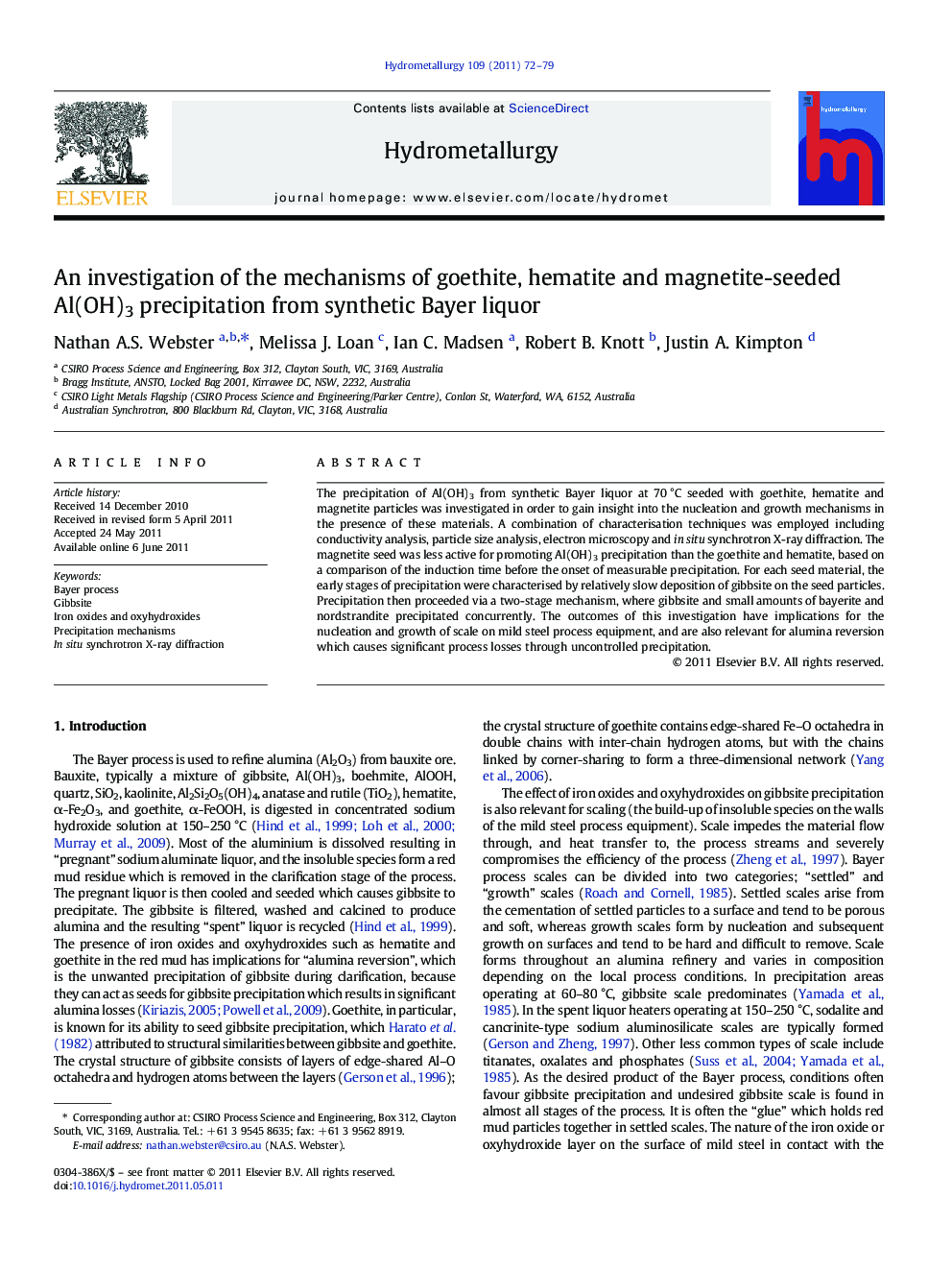| Article ID | Journal | Published Year | Pages | File Type |
|---|---|---|---|---|
| 212643 | Hydrometallurgy | 2011 | 8 Pages |
The precipitation of Al(OH)3 from synthetic Bayer liquor at 70 °C seeded with goethite, hematite and magnetite particles was investigated in order to gain insight into the nucleation and growth mechanisms in the presence of these materials. A combination of characterisation techniques was employed including conductivity analysis, particle size analysis, electron microscopy and in situ synchrotron X-ray diffraction. The magnetite seed was less active for promoting Al(OH)3 precipitation than the goethite and hematite, based on a comparison of the induction time before the onset of measurable precipitation. For each seed material, the early stages of precipitation were characterised by relatively slow deposition of gibbsite on the seed particles. Precipitation then proceeded via a two-stage mechanism, where gibbsite and small amounts of bayerite and nordstrandite precipitated concurrently. The outcomes of this investigation have implications for the nucleation and growth of scale on mild steel process equipment, and are also relevant for alumina reversion which causes significant process losses through uncontrolled precipitation.
Research highlights► Goethite, hematite and magnetite-seeded Al(OH)3 precipitation from Bayer liquor at 70 °C was investigated; ► Magnetite was a less active seed for precipitation than goethite and hematite; ► The early stages of precipitation were characterised by slow deposition of gibbsite on the seed particles; ► Precipitation then proceeded via a two-stage mechanism, where gibbsite and small amounts of bayerite and nordstrandite precipitated concurrently.
